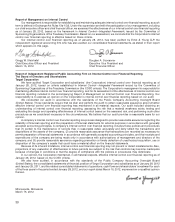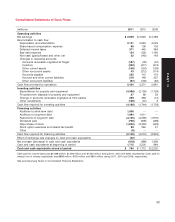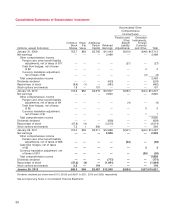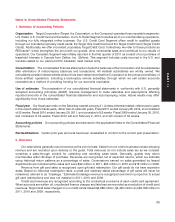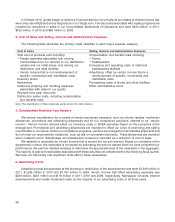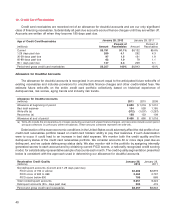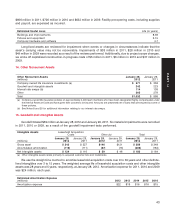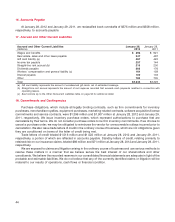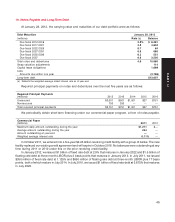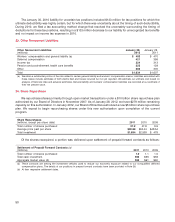Target 2011 Annual Report Download - page 64
Download and view the complete annual report
Please find page 64 of the 2011 Target annual report below. You can navigate through the pages in the report by either clicking on the pages listed below, or by using the keyword search tool below to find specific information within the annual report.
10. Credit Card Receivables
Credit card receivables are recorded net of an allowance for doubtful accounts and are our only significant
class of financing receivables. Substantially all past-due accounts accrue finance charges until they are written off.
Accounts are written off when they become 180 days past due.
January 28, 2012 January 29, 2011
Age of Credit Card Receivables
Percent of Percent of
(millions) Amount Receivables Amount Receivables
Current $5,791 91.1% $6,132 89.6%
1-29 days past due 260 4.1 292 4.3
30-59 days past due 97 1.5 131 1.9
60-89 days past due 62 1.0 79 1.1
90+ days past due 147 2.3 209 3.1
Period-end gross credit card receivables $6,357 100% $6,843 100%
Allowance for Doubtful Accounts
The allowance for doubtful accounts is recognized in an amount equal to the anticipated future write-offs of
existing receivables and includes provisions for uncollectible finance charges and other credit-related fees. We
estimate future write-offs on the entire credit card portfolio collectively based on historical experience of
delinquencies, risk scores, aging trends and industry risk trends.
Allowance for Doubtful Accounts
(millions) 2011 2010 2009
Allowance at beginning of period $ 690 $ 1,016 $ 1,010
Bad debt expense 154 528 1,185
Write-offs (a) (572) (1,007) (1,287)
Recoveries (a) 158 153 108
Allowance at end of period $ 430 $ 690 $ 1,016
(a) Write-offs include the principal amount of losses (excluding accrued and unpaid finance charges), and recoveries include current period
principal collections on previously written-off balances. These amounts combined represent net write-offs.
Deterioration of the macroeconomic conditions in the United States could adversely affect the risk profile of our
credit card receivables portfolio based on credit card holders’ ability to pay their balances. If such deterioration
were to occur, it could lead to an increase in bad debt expense. We monitor both the credit quality and the
delinquency status of the credit card receivables portfolio. We consider accounts 30 or more days past due as
delinquent, and we update delinquency status daily. We also monitor risk in the portfolio by assigning internally
generated scores to each account and by obtaining current FICO scores, a nationally recognized credit scoring
model, for a statistically representative sample of accounts each month. The credit-quality segmentation presented
below is consistent with the approach used in determining our allowance for doubtful accounts.
Receivables Credit Quality January 28, January 29,
(millions) 2012 2011
Nondelinquent accounts (Current and 1-29 days past due)
FICO score of 700 or above $2,882 $2,819
FICO score of 600 to 699 2,463 2,737
FICO score below 600 706 868
Total nondelinquent accounts 6,051 6,424
Delinquent accounts (30+ days past due) 306 419
Period-end gross credit card receivables $6,357 $6,843
40


